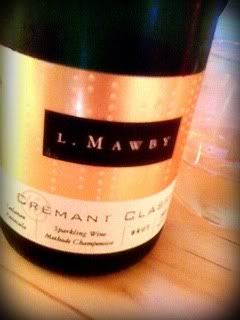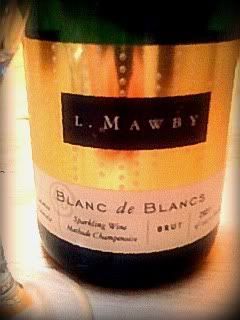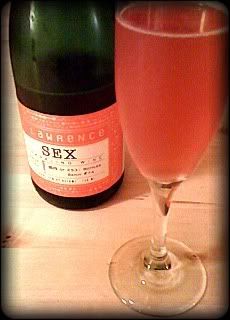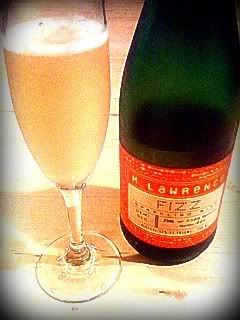What started as an idle thought - "can I taste wines from all 50 U.S. states?" - has become a personal mission. Now And Zin's Wine Country series debuted nearly a decade ago, and we have now tasted wine from 45 states. Just five to go - Alaska, Mississippi, Oklahoma, Utah and Wyoming.
Now And Zin's Wine Country started with a series about wines made from America's Norton grape, in which I sampled wine from Missouri, Virginia and Georgia for the first time. I was surprised by the quality and fascinated by the notion of wine tasting across America.
If you can make good wine in California, that's expected - not that it's easy, but it seems that's what you're supposed to do with great soil and perfect weather. Making good wine in areas of the country where nature isn't quite as accommodating is a real achievement.
I've heard from American winemakers about Indiana limestone, Cornell grape creations and moderating winds from - of all places - Lake Erie. I've heard winemakers cry in anguish, "I want to make dry wines, but all my customers want is sweet!"
I've sampled mead from Montana and Maine, Muscadine from Alabama and Kentucky Cabernet Franc. I've had a Super Tuscan-style blend from Arizona, mile-high wine from Colorado, amazing bubbles from Massachusetts, Michigan and Illinois, Zinfandel from Nevada and New Mexico, New York Riesling, New Jersey Merlot and North Carolina Chardonnay.
I've tried wine made from Vermont apples, Florida blueberries, North Dakota rhubarb, West Virginia blackberries and Hawaiian Maui pineapples.
Two Nebraska wines are named after pelicans; a South Dakota winemaker uses Petite Sirah to take the acidic edge off the Frontenac. There's Touriga Nacional growing in Tennessee.
Most of the wines for this series have been supplied by the winemakers for the purpose of the article, while some have been sent by friends of mine who had travel plans to a state I had yet to taste. To all who have sent wine for this project, I offer my heartfelt thanks.
It has taken nine years to sample wine from 45 states, so the end is in sight. Shipping wine in the United States has proven to be a stumbling block on more than one occasion.
Contacts made in Utah and Oklahoma have dropped out of sight, while responses are hard to come by at all from Alaska, Wyoming and Mississippi. I am sure for some of these states, I'll probably have to find someone who makes wine in their garage. Any Mississippi garagistes out there?
While we are on the subject, if you know a winemaker in the states which haven't been covered in Wine Country yet - Alaska, Mississippi, Oklahoma, Utah and Wyoming - please pass this article along to them. Even if they can't ship to me, I'd love to hear from them.
Also, one state which has been left blank is California. Of course, I sample a lot of California wine, so finding it isn't the problem. I want to determine one wine or winery which is representative of California for this series. If you have any thoughts, I'd love to hear them. Comment here, email nowandzin@gmail.com or contact me on Twitter.
Follow Randy Fuller on Twitter











 The L. Mawby Cremant Classic is made from 100% Leelanau Peninsula Vignoles from the Cremant Vineyard. It's an impressive wine, with frothy white bubbles, sweet citrus notes and almonds on the nose, lots of nuts in the flavor profile and a pleasant lemony feel on the palate. It shows a very pleasant sensation of ginger beer on the finish. The grapes used in making this wine - and the other three I'll mention - are hand-harvested and whole cluster pressed. Only the cuvée - the initial, gently pressed juice - is used in making the Cremant Classic. It retails for $22.
The L. Mawby Cremant Classic is made from 100% Leelanau Peninsula Vignoles from the Cremant Vineyard. It's an impressive wine, with frothy white bubbles, sweet citrus notes and almonds on the nose, lots of nuts in the flavor profile and a pleasant lemony feel on the palate. It shows a very pleasant sensation of ginger beer on the finish. The grapes used in making this wine - and the other three I'll mention - are hand-harvested and whole cluster pressed. Only the cuvée - the initial, gently pressed juice - is used in making the Cremant Classic. It retails for $22. L. Mawby Blanc de Blancs - like the Cremant Classic - is also produced in the méthode champenoise. It's a non-vintage sparkler of 100% Chardonnay from the Leelanau Peninsula AVA. Only the cuvée is used and it is bottle fermented and aged a minimum of 24 months. This wine sports a nutty nose with lemon-lime citrus notes and a yeasty feel on both the nose and palate. It's bright and festive, and retails for $19.
L. Mawby Blanc de Blancs - like the Cremant Classic - is also produced in the méthode champenoise. It's a non-vintage sparkler of 100% Chardonnay from the Leelanau Peninsula AVA. Only the cuvée is used and it is bottle fermented and aged a minimum of 24 months. This wine sports a nutty nose with lemon-lime citrus notes and a yeasty feel on both the nose and palate. It's bright and festive, and retails for $19. The M. Lawrence Sex is a rosé bubbly made from 75% Pinot Noir and 25% Chardonnay grapes. This one is a tad sweeter, getting a Brut dosage of 1.4% RS. Again, only the cuvée is used, but this wine is produced using cuve closefermentation - receiving its second fermentation in a closed tank.
The M. Lawrence Sex is a rosé bubbly made from 75% Pinot Noir and 25% Chardonnay grapes. This one is a tad sweeter, getting a Brut dosage of 1.4% RS. Again, only the cuvée is used, but this wine is produced using cuve closefermentation - receiving its second fermentation in a closed tank. Fizz is also under the M. Lawrence label, and it's their sweetest sparkling wine. Produced from 75% Pinot Noir and 25% Chardonnay grapes, Fizz differs from the other three L. Mawby wines I tasted, in that the tailles juice is used - the second fraction of juice pressed, after cuvée - and it's finished with a Demi-Sec dosage, 3.5% RS.
Fizz is also under the M. Lawrence label, and it's their sweetest sparkling wine. Produced from 75% Pinot Noir and 25% Chardonnay grapes, Fizz differs from the other three L. Mawby wines I tasted, in that the tailles juice is used - the second fraction of juice pressed, after cuvée - and it's finished with a Demi-Sec dosage, 3.5% RS.